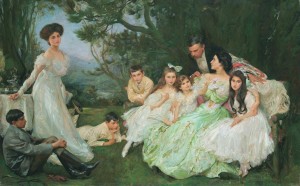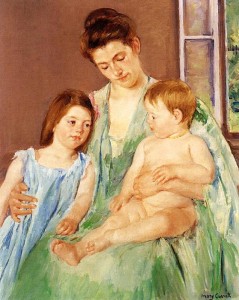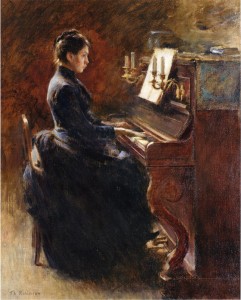 As the critic Per Seyersted phrases it, Kate Chopin “broke new ground in American literature. She was the first woman writer in her country to accept passion as a legitimate subject for serious, outspoken fiction. Revolting against tradition and authority; with a daring which we can hardy fathom today; with an uncompromising honesty and no trace of sensationalism, she undertook to give the unsparing truth about woman’s submerged life. She was something of a pioneer in the amoral treatment of sexuality, of divorce, and of woman’s urge for an existential authenticity. She is in many respects a modern writer, particularly in her awareness of the complexities of truth and the complications of freedom.” (The Kate Chopin International Society)
As the critic Per Seyersted phrases it, Kate Chopin “broke new ground in American literature. She was the first woman writer in her country to accept passion as a legitimate subject for serious, outspoken fiction. Revolting against tradition and authority; with a daring which we can hardy fathom today; with an uncompromising honesty and no trace of sensationalism, she undertook to give the unsparing truth about woman’s submerged life. She was something of a pioneer in the amoral treatment of sexuality, of divorce, and of woman’s urge for an existential authenticity. She is in many respects a modern writer, particularly in her awareness of the complexities of truth and the complications of freedom.” (The Kate Chopin International Society)
Edna Pontellier reveals this dynamic throughout The Awakening. The women around her represent two potential choices for her development. But in order to understand her journey, we have to understand her starting point. Victorian society in the United States demanded rigid, defined roles for both men and women. The ideal Victorian woman was exemplified by the English poet Coventry Patmore”s 1854 narrative poem “The Angel in the House.” The paragon of female virtue described in the poem, who Patmore based on his own wife, is a creature whose feminine beauty, virtue, attention to family, and devotion to husband set her apart from mere mortals (these expectations carried with them a suppressive, near overwhelming demand for perfection which few women could hope to maintain). When you add on the cultural expectations of New Orleans, you can see why change, for Edna, is a gradual process.
These expectations are laid out beautifully in the following 1901 excerpt from The Picayune’s Creole Cook Book, published in 1901 by the New Orleans Picayune, one of the three leading newspapers in the latter part of the 19th century. The Picayune was the first Southern daily to be published by a woman, Eliza Poitevent Nicholson, who took over the paper after the death of her husband in 1876.
The Creole mother eminently merits the term that was bestowed upon her long ago by a sweet Louisiana poet, and which has become a household word in the French Quarter, Femme de l’Intérieure. These words indicate her life, that beautiful, interior, hidden home life, not given to solving the many vexing questions of woman suffrage and woman’s rights, that agitate the minds of many of the sex in our day, for she is no aggressive competitor in the ranks and callings of men; she is indeed the “Femme de l’Intérieure”, the queen of the hearth and home. She holds the home as woman’s supreme sphere, her ideal realm, where Love is her throne, a throne reared in the hearts of her husband and children, and of which the attendant ministers are Purity, Truth and Fidelity. She is cultured, gracious, refined, as able to grace the parlor as she is capable of presiding in the kitchen; thoroughly conversant with all the leading topics of the day, with which she familiarizes herself, not that she may be regarded simply as a brilliant woman, not for the sake of argumentative discourse on public platforms, but for her own inner satisfaction and pleasure, and that she may be the fitting companion of her husband, the pleasing, intelligent confidant of her children, the wise and earnest director of their moral and intellectual aspirations and ambitions. And so her husband learns to look to his home during the weary working hours of the day as to a beacon star, for he knows that within bloom the fairest flowers of modest worth; the violet and the rose are there, the chrysanthemum and the lily, and those that bloom in God’s own garden shed not a sweeter fragrance than these heavenly exotics around the hearth of the true Creole home…
Essentially, Edna Pontellier has two choices for her life, as characterized by her two closest friends.
The Mother-Woman
Adèle Ratignolle
(Traditional)
Young Mother and Two Children
by Mary Cassatt, 1905
Secure
Good mother
Inner peace
Beautiful
but…
Repressed by society
Chained to husband
Child bearer
The Artist-Woman
Mademoiselle Reisz
(Non-traditional)
Girl at the Piano
by Theodore Robinson, 1887
Devoted musician
Independent
but…
Bitter and unfriendly
Scorned by society
Victorian family painting at top: “The Golden Butterfly – The Harvey Family.” John Henry Frederick Bacon (1868-1914)


